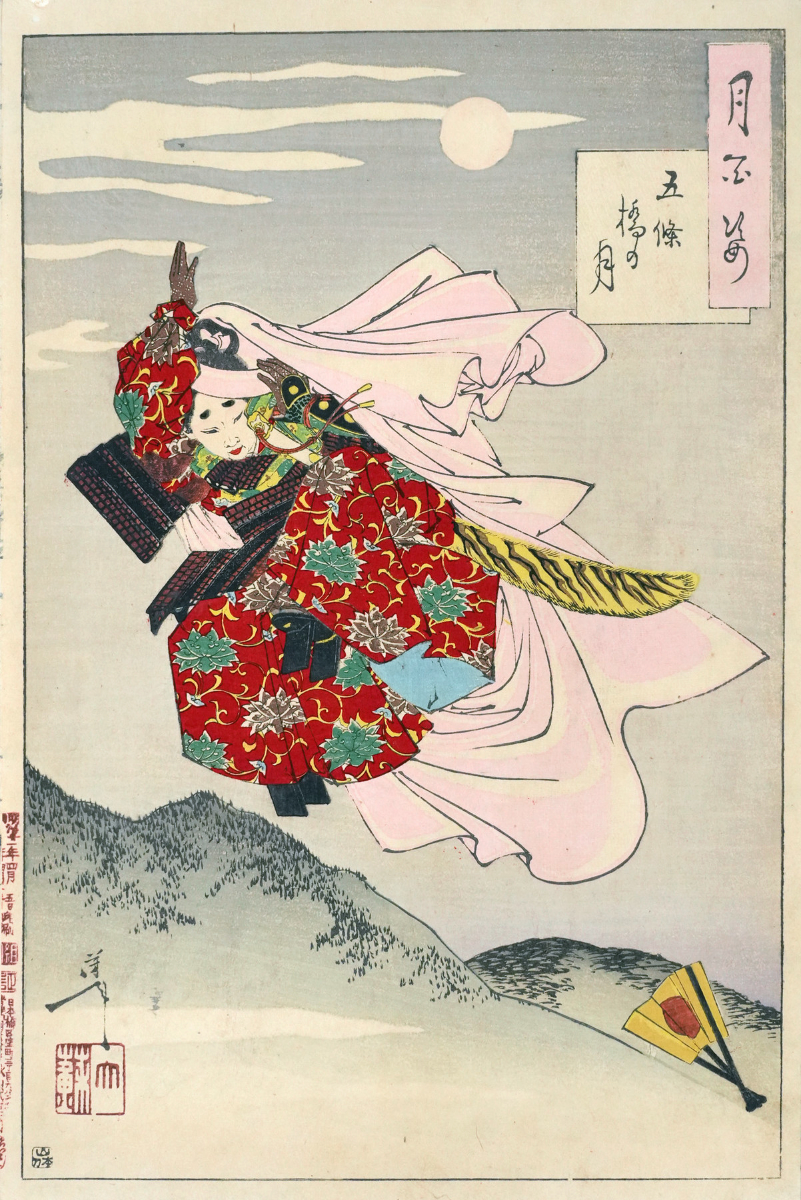Minamoto no Yoshitsune (源 義経, c. 1159 – June 15, 1189) was a commander of the Minamoto clan of Japan in the late Heian and early Kamakura periods. During the Genpei War, he led a series of battles that toppled the Ise-Heishi branch of the Taira clan, helping his half-brother Yoritomo consolidate power. He is considered one of the greatest and the most popular warriors of his era, and one of the most famous samurai in the history of Japan. Yoshitsune perished after being betrayed by the son of a trusted ally and was labelled as a tragic hero. The legends that deal with his public career show Yoshitsune as a great, virtuous warrior. He was often shown as kind to those around him and honorable, but was also shown to be naive.
| Alias Minamoto no Yoshitsune (源 義経) |
| Real Names/Alt Names Ushiwakamaru (牛若丸) |
| Characteristics Hero, Samurai, Historical Figures, Medieval Age, Japanese |
| Creators/Key Contributors Tsukioka Yoshitoshi, ○ |
| First Appearance Historical figure (b. 1159 – d. 1189) |
| First Publisher ○ |
| Appearance List Heike Monogatari (c. 1330), Gikeiki (14th century), Ataka (Noh play, late 15th century), Yoshitsune Shin Takadachi (1744, jōruri), Yoshitsune Senbon Zakura (1747, jōruri/kabuki), Kanjinchō (1840, kabuki), The Men Who Tread on the Tiger’s Tail (1945 film) by Akira Kurosawa |
| Sample Read Tale of the Heike (Heike monogatari) [Internet Archive] |
| Description Minamoto no Yoshitsune (源 義経, c. 1159 – June 15, 1189) was a commander of the Minamoto clan of Japan in the late Heian and early Kamakura periods. During the Genpei War, he led a series of battles that toppled the Ise-Heishi branch of the Taira clan, helping his half-brother Yoritomo consolidate power. He is considered one of the greatest and the most popular warriors of his era, and one of the most famous samurai in the history of Japan. Yoshitsune perished after being betrayed by the son of a trusted ally and was labelled as a tragic hero. The legends that deal with his public career show Yoshitsune as a great, virtuous warrior. He was often shown as kind to those around him and honorable, but was also shown to be naive. |
| Source Minamoto no Yoshitsune – Wikipedia |


